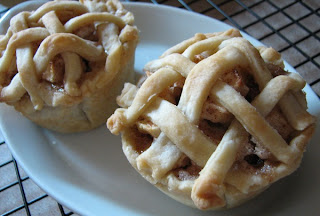Every time I make bread from scratch I think to myself: I don’t do this nearly often enough. It’s not the taste of home-baked bread that spurs that thought -- truth be told, I sometimes prefer the store-bought stuff -- but rather the physical process of making bread. Kneading dough is therapeutic. (No bread machine or stand mixer with a dough hook here. That would spoil the fun.) So there I was on a recent Friday morning, in need of kitchen therapy, happily working some dough.
The recipe at hand was a Moroccan-style challah from Joan Nathan that has been making the rounds of newspaper food sections for the past year. Two qualities in particular set this bread apart from “conventional” challah in America. One is that it has a very short rise time (10 minutes!); the entire process of mixing, kneading, resting, shaping, and baking the dough takes about an hour. The second is the flavoring: anise seed in the original recipe, fennel seed when I made it. (Both seeds impart a licorice flavor, but fennel seed has a milder taste. And it’s what I had on hand.) The loaves are topped with sesame.
The result was intriguing, if not exactly challah-like. My loaves were fragrant, narrow, and dense. Too dense, perhaps; I was expecting them to rise more in the oven. Whether that is a reflection of the recipe, a cold kitchen, or the cook is not clear. What I need here is a second opinion, so give this recipe a try and let me know how it works for you. Come on, you can do it. It only takes an hour.
60-Minute Moroccan-Style Challah
Adapted from Joan Nathan’s Pain Petri, or Moroccan Anise-Flavored Challah With Sesame Seeds. Makes 2 loaves.
1 Tbsp active dry yeast
1 cup lukewarm water
1 large egg
1/4 cup canola oil
4 cups flour (divided use), plus more for dusting
1/2 Tbsp salt
2.5 Tbsp sugar
1 Tbsp fennel seed, crushed (or anise seeds, which are smaller and can be used whole)
1 cup lukewarm water
1 large egg
1/4 cup canola oil
4 cups flour (divided use), plus more for dusting
1/2 Tbsp salt
2.5 Tbsp sugar
1 Tbsp fennel seed, crushed (or anise seeds, which are smaller and can be used whole)
1 extra egg yolk, beaten with 1/2 Tbsp water, for glaze
1/2 Tbsp plus 1 tsp toasted sesame seeds
Preheat your oven to 375 degrees. Have on hand a baking sheet lined with parchment paper.
Put the yeast in a large mixing bowl and pour in the water. Stir to dissolve the yeast. Whisk in the egg, then the oil.
Add 3.5 cups of the flour, the salt, sugar, and fennel seeds to the yeast mixture, and stir with a wooden spoon until the dough begins to come together. Turn the dough out onto a floured surface and knead the dough for about 5 minutes or until it is smooth and elastic. If the dough feels sticky, knead in more flour (from the remaining half cup) in increments as necessary.
Shape the dough into a round loaf and poke a 1-inch hole completely through the center. (You can use the handle of the wooden spoon to do this.) Let the dough rest, uncovered, on the floured surface, for about 10 minutes.
Divide the dough in half. On a lightly floured surface, and with floured hands, roll one piece of dough into a 2-foot-long rope, pinching closed any seams that form in the dough. Bring the two ends of the rope next to each other and twist the dough to form a loose spiral. Pinch the ends together and tuck under the loaf. Place the bread on the baking sheet. Repeat with the second piece of dough.
Brush the egg glaze over the loaves and sprinkle them with the sesame seeds.
Bake for 10 minutes. Reduce the oven temperature to 350 degrees, and bake for another 30 minutes, or until the loaves sound hollow when tapped on the bottom.
































